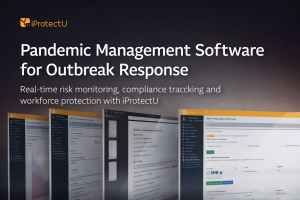Obsolete electrical equipment in the workplace is particularly vulnerable to these hazards and can lead to serious injury or death if not properly maintained and replaced. Ageing and obsolescence of electrical assets within a business should be managed, using a proactive system.
Electrical equipment is often designed with a relatively long lifetime (typically 20+ years). There should be a procedure in place which provides guidance on ensuring the equipment’s integrity over this period, if not well beyond it. Keeping electrical equipment in service beyond its original design life must consider commercial and safety considerations.
Identify Obsolete Electrical Equipment
Factors to consider when identifying obsolete electrical equipment include:
- Age: Equipment over ten years old is at a higher risk of obsolescence.
- Original design life: The original design life of the equipment may have expired, and the equipment may no longer be able to meet current safety standards.
- Environmental factors: Equipment which has been exposed to harsh environmental conditions, such as extreme heat or moisture, is more likely to fail before its time.
- Modifications: Equipment that has been modified or repaired without proper documentation may be more difficult to maintain and may pose safety risks.
Conduct a Risk Assessment
The risk assessment should consider the following factors:
- Type of equipment: The type of equipment and its intended use.
- Location of equipment: The location of the equipment, such as in wet or dusty areas, can also increase the risk of failure.
- Personnel who use the equipment: The training and experience of the personnel who operate the equipment will also affect the level of risk.
Implement Control Measures
Suitable control measures may include:
- Maintenance: Obsolete equipment should be maintained and tested more often than newer equipment.
- Replacement: Obsolete equipment should be replaced as soon as possible with newer, safer equipment.
- Isolation: Obsolete equipment which cannot be replaced should be isolated from the power supply and labelled as “Out of Service.”
Training and Education
Training should be provided for employees responsible for using or maintaining obsolete electrical equipment and should typically include:
- Recognising the hazards related to obsolete equipment
- Suitable maintenance and operating procedures
- Emergency procedures in case of equipment failure
Document everything – all maintenance and testing activities, as well as any decisions to isolate or replace obsolete electrical equipment. This will help to ensure that the risks associated with obsolete equipment are properly managed and that changes are made promptly. By following safety management practices, employers can help to protect their employees from the dangers associated with obsolete electrical assets.
The Asset Management app provided by iProtectU EHS Software is a powerful tool that helps businesses track and manage their assets.
The app can be used to track the location of assets, their condition, and their associated risks. The app also includes features that help businesses to improve their asset management practices, such as:
- Asset inventory
- Risk assessment
- Maintenance scheduling
- Reporting
- Integration with other iProtectU EHS Software products








